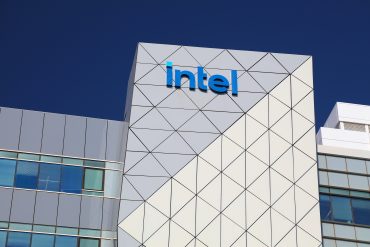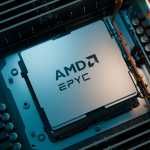
- AI Infrastructure
- CHIPS Act
- Equity Stake
U.S. Turns CHIPS Act Grants Into Equity Stakes in Chipmakers
6 minute read

Federal semiconductor investments shift from grants to equity stakes as CHIPS Act funding transforms domestic chip production
Key Takeaways
- The U.S. is considering taking equity positions in semiconductor firms receiving CHIPS Act subsidies, including a potential 10% stake in Intel, marking an unprecedented shift from grants to government ownership in strategic tech companies.
- Over $32 billion of the $39 billion CHIPS Act manufacturing incentives has been distributed to companies including TSMC ($6.6 billion), Micron ($6.2 billion), and Samsung ($4.75 billion), with the government now seeking returns on taxpayer investments.
- Semiconductor industry revenue is projected to grow 11% in 2025 to approximately $697 billion, driven by AI and data center demand, with capital expenditures expected to reach $185 billion.
Introduction
The U.S. government moves toward taking direct ownership stakes in major semiconductor companies that receive federal subsidies, fundamentally altering the relationship between Washington and the tech industry. Commerce Secretary Howard Lutnick confirms discussions with Intel about converting CHIPS Act grants into equity positions, potentially making the federal government the chipmaker’s largest shareholder.
This unprecedented approach transforms traditional government support from passive grants to active investment participation. The strategy affects industry giants including Intel, Micron, Taiwan Semiconductor Manufacturing Co, and Samsung, all recipients of substantial federal funding under the CHIPS and Science Act.
Key Developments
White House press secretary Karoline Leavitt confirms that Lutnick works on a deal to secure a 10% government stake in Intel. The administration frames this initiative as ensuring American taxpayers receive returns on their semiconductor investments rather than providing grants without compensation.
Lutnick emphasizes the transformation of existing commitments into equity arrangements. “We’ll deliver the money which was already committed under the Biden administration, we’ll get equity in return for it,” he states. The Commerce Secretary clarifies that these equity stakes would not grant the government voting rights or operational control over company decisions.
The timing coincides with SoftBank’s announcement of a $2 billion investment in Intel, signaling renewed confidence in the chipmaker’s prospects. Treasury Secretary Scott Bessent joins Lutnick in leading this equity initiative, with Trump administration officials providing support for the unprecedented approach.

Market Impact
Semiconductor industry margins expand from 23.5% to 28.6% in 2024, despite broader economic uncertainties. The sector demonstrates resilience with 86% of executives expecting revenue growth in 2025, and 46% anticipating increases exceeding 10%.
Gartner forecasts double-digit global semiconductor revenue growth extending through 2026, with projected increases of 11.8% in 2025 and 11.2% in 2026. Manufacturing capacity expansion reaches 7% as capital expenditures surge to meet growing demand from artificial intelligence applications and data center infrastructure.
The CHIPS Act catalyzes over 100 new projects across 28 states, spanning advanced fabrication facilities and supply chain infrastructure. These investments target both cutting-edge semiconductors for emerging technologies and mature chips essential for defense and automotive applications.
Strategic Insights
Government equity participation shifts Washington from passive subsidizer to active financial stakeholder in semiconductor success. This alignment of public and private interests creates mechanisms for taxpayer returns while maintaining company operational independence through non-voting equity structures.
The approach addresses national security concerns about semiconductor supply chain vulnerabilities, particularly dependence on Taiwan-based manufacturing. Lutnick emphasizes domestic production imperatives: “We need to make our own chips here. We cannot rely on Taiwan.”
Risk-sharing arrangements mean government exposure to both sector upside and potential downside performance. The strategy leverages public investment to attract additional private capital, as government backing signals confidence in domestic semiconductor manufacturing viability.
Expert Opinions and Data
Industry analysts view the equity approach as necessary evolution of industrial policy to compete with China’s aggressive semiconductor support. The strategy addresses criticism of traditional grant structures that provide public funding without corresponding taxpayer benefits.
However, some observers express concerns about potential politicization of business decisions or bureaucratic interference in corporate governance. Critics worry about government dual roles as both regulator and shareholder creating conflicts of interest.
Craig Jones, VP of security operations at Ontinue, highlights broader security considerations affecting semiconductor policy. Recent cybersecurity incidents involving China-nexus actors targeting critical infrastructure underscore the strategic importance of domestic chip manufacturing capabilities.
The administration maintains flexibility on export policies, with Lutnick indicating openness to Nvidia selling modified AI chips to China under revenue-sharing arrangements. Trump’s team negotiated a deal requiring Nvidia and Advanced Micro Devices to pay 15% of Chinese chip sales revenue to the government.
Conclusion
The proposed equity stakes represent a fundamental shift in U.S. semiconductor policy, moving beyond traditional subsidy models toward direct government investment participation. This approach creates new mechanisms for taxpayer returns while addressing national security concerns about supply chain independence.
With over $32 billion in CHIPS Act funding already allocated, the equity conversion strategy affects the entire domestic semiconductor ecosystem. The initiative establishes precedent for government ownership in strategic industries while maintaining operational independence for recipient companies.








